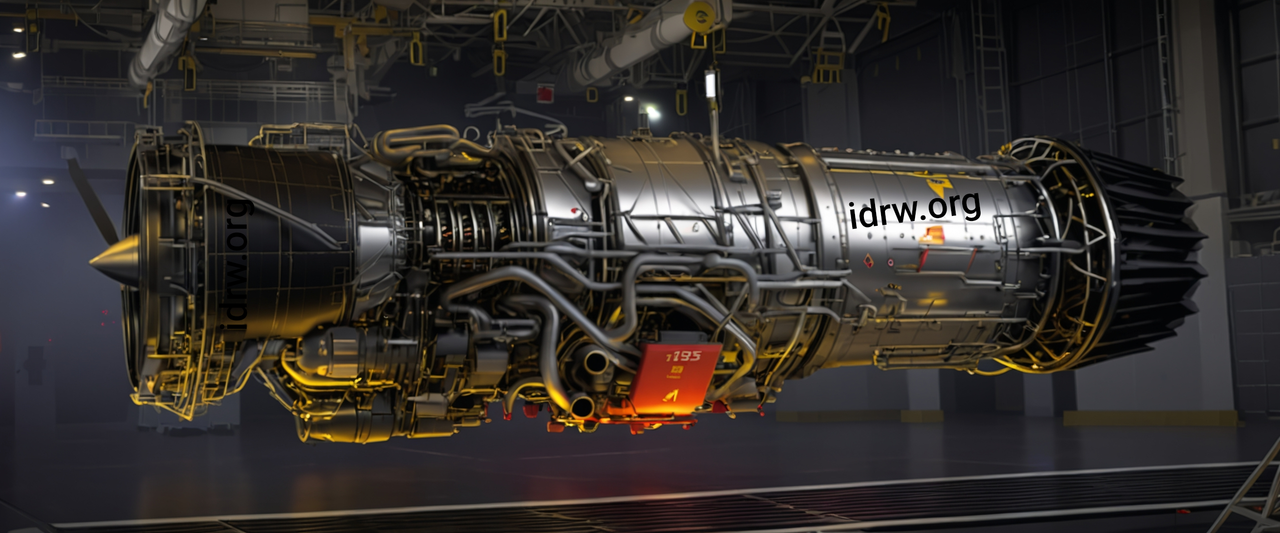SOURCE: RAUNAK KUNDE / NEWS BEAT / IDRW.ORG


India is set to develop a new high-thrust engine for its Advanced Medium Combat Aircraft (AMCA) program, the country’s ambitious 5th-generation fighter jet project. According to sources within the Gas Turbine Research Establishment (GTRE), which is the lead agency responsible for this development, the new engine will require a minimum accumulated 1,600 hours of running time over nearly eight years before it can be cleared for production.
The development of the new 110 kN thrust class engine, in collaboration with a foreign Original Equipment Manufacturer (OEM), is projected to take nearly eight years, with extensive testing protocols set to validate its performance. GTRE sources indicate idrw.org that the initial 3-4 years of this timeline will be dedicated to ground-based testing. During this phase, the engine’s various parameters, such as fuel efficiency, reliability, and thrust output, will be meticulously evaluated.
Once ground testing achieves a near pre-production standard, the engine will transition to flight trials on a designated flying testbed. This phase is crucial for verifying the engine’s performance under real-world flight conditions. The engine is expected to undergo multiple refinements based on data collected during these trials. The ultimate goal is to enhance the demonstrator engine’s performance incrementally until it can achieve supersonic flight without afterburners, reach altitudes of up to 50,000 feet, endure load factors ranging from ?2g to +9g, and operate at angles of attack up to 30 degrees.
To expedite the development timeline and streamline testing protocols, GTRE is exploring innovative strategies, including the possibility of using early AMCA prototypes as flying test beds for the new engine. This approach could potentially reduce the overall time required for inflight development, as it would avoid the need to conduct initial trials on separate platforms before transitioning to the AMCA.
However, the possibility of using a designated flying test bed platform for the engine’s initial trials has not been ruled out. This hybrid approach would provide GTRE with the flexibility to optimize the testing process, ensuring that all necessary evaluations are conducted efficiently and comprehensively.
GTRE plans to develop at least seven engines in total: three ground demonstrator engines and four pre-production engines. The ground demonstrator engines will be primarily used for static testing, while the pre-production engines will be employed for onboard flight testing. This comprehensive testing regime aims to ensure that the engine meets all operational and technical parameters before full-scale production begins.
The new engine will feature a dry thrust rating of 75 kN, making it the highest dry thrust engine in the 25-ton class aircraft. This significant thrust capability will enable the AMCA to achieve “supercruise,” a critical feature allowing the aircraft to fly at supersonic speeds without engaging afterburners. The ability to supercruise not only enhances the aircraft’s operational efficiency by conserving fuel but also provides a tactical advantage by reducing the aircraft’s infrared signature, making it harder to detect by enemy sensors.
In addition to its impressive dry thrust capabilities, the engine’s wet thrust, which involves the use of afterburners, is initially rated at 110 kN. However, future variants of the engine could see this wet thrust capability increased to between 120 and 130 kN. These enhancements would not require major changes to the engine’s core, making them cost-effective and relatively straightforward to implement. This potential for scalability further underscores the engine’s advanced design and adaptability, ensuring that it can meet evolving operational requirements over the AMCA’s service life.
GTRE is hopeful of announcing the International Aerospace major with whom it will be developed later this year or in early 2025. Safran is heading the race, while Rolls-Royce is close behind with GE Aerospace last in the race.
NOTE : Article cannot be reproduced without written permission of idrw.org in any form even for YouTube Videos to avoid Copy right strikes. Websites doing illegal reproductions will get DMCA and Legal Notices.